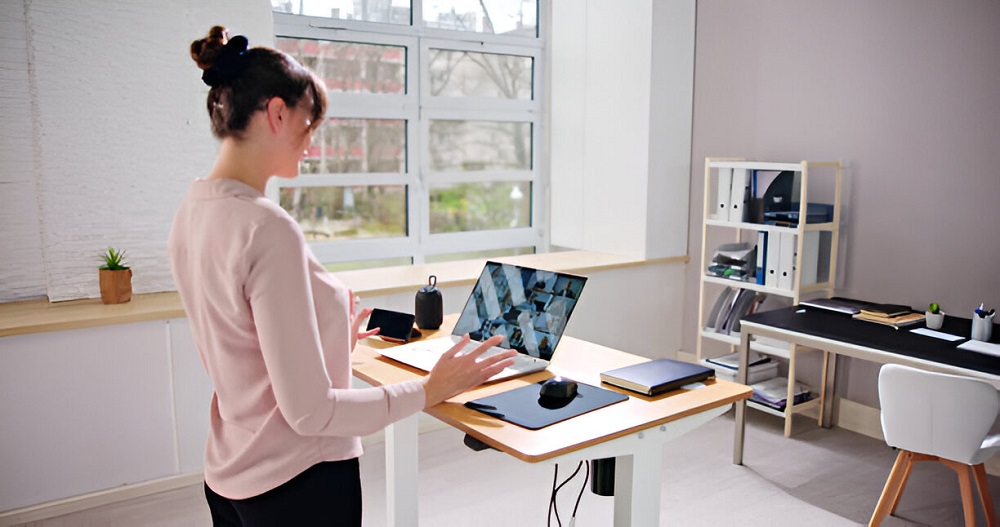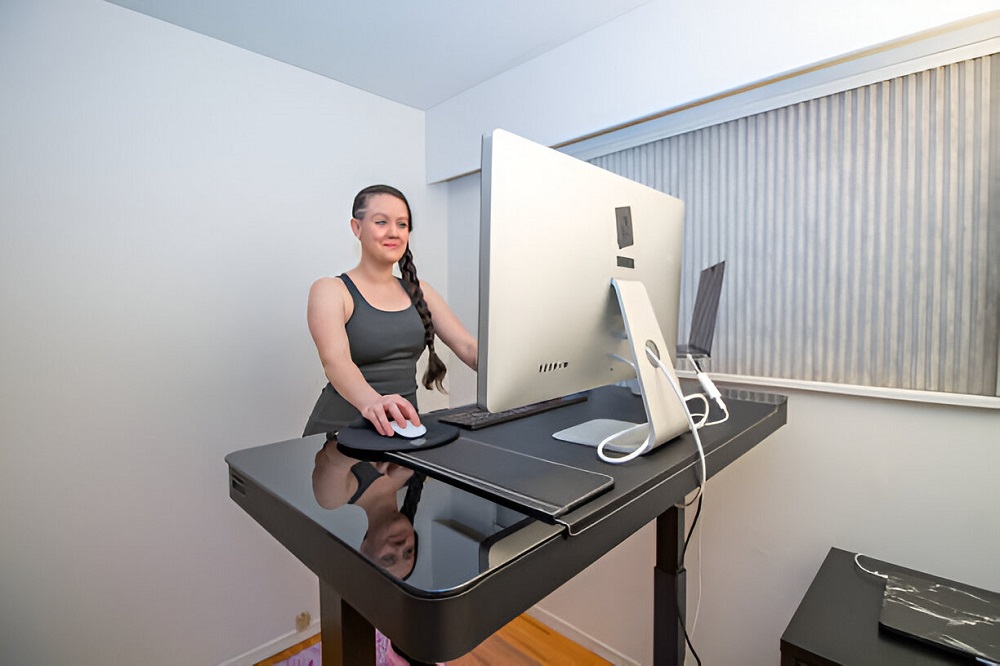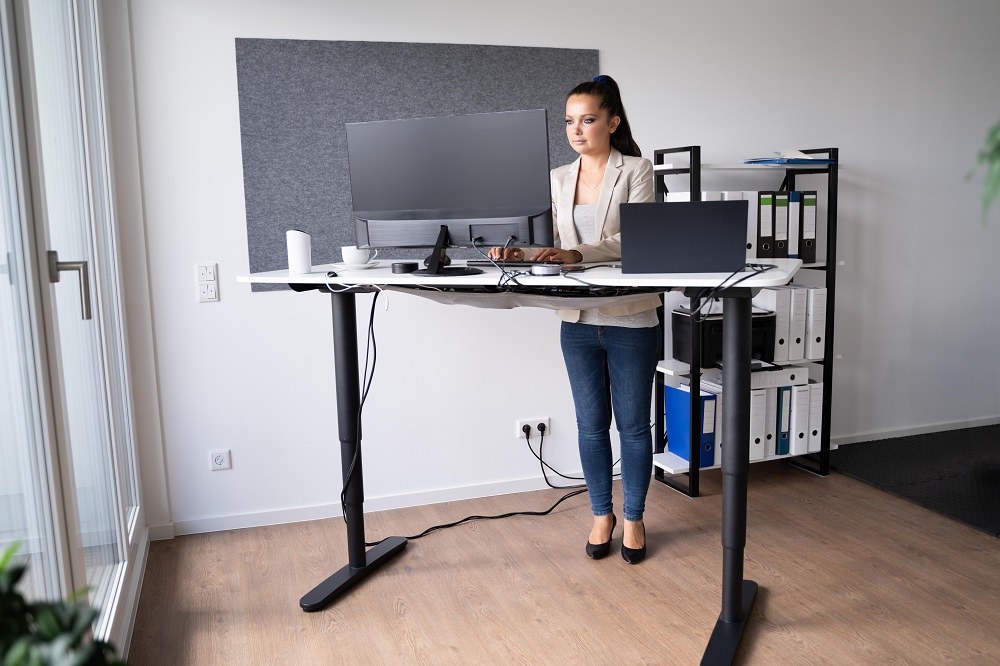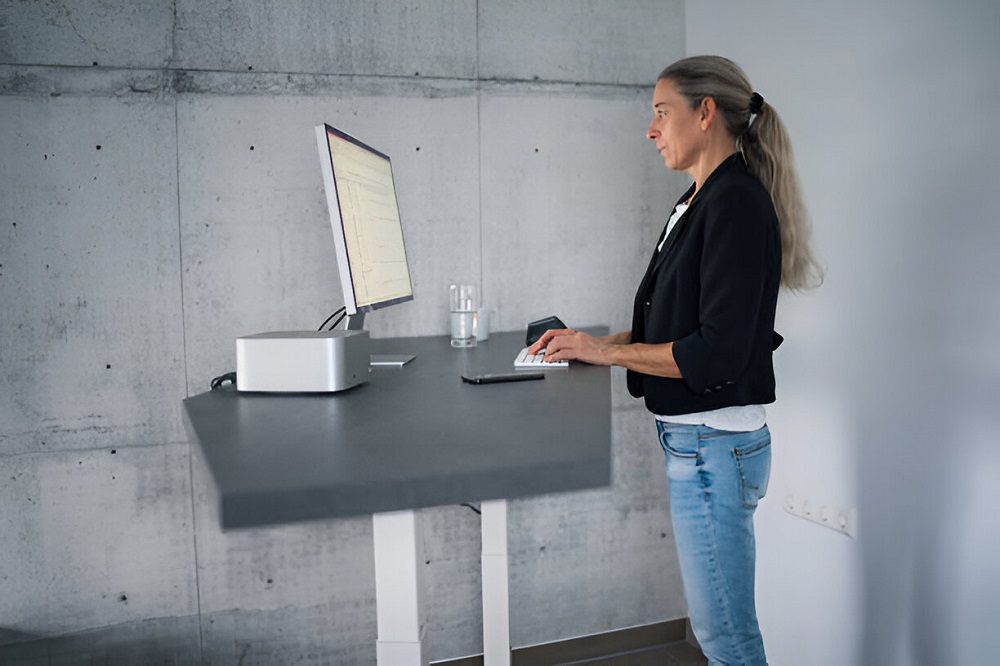The modern office is evolving. Gone are the days of slouching in chairs for eight hours straight. Today, a growing trend emphasizes ergonomics and well-being, with standing desks taking center stage.
But are standing desks right for everyone?
And if you are considering making the switch, what factors should you consider before investing in one?
Is a Standing Desk Right for You?
The quick answer: it depends.
While research suggests numerous health benefits associated with standing desks, including lower blood sugar levels, reduced rate of heart disease, and reduced back pain, it's not a one-size-fits-all solution.
Here’s a rundown of all the benefits that owning standing desks can add to your life:
- Improved posture: Sitting all day strains your back and core. Standing desks encourage better posture, reducing back pain and discomfort.
- Increased calorie burning: Standing burns slightly more calories than sitting, contributing to a healthier lifestyle.
- Enhanced focus and productivity: Standing can improve alertness and focus, potentially leading to increased productivity.
- Reduced risk of health problems: Prolonged sitting has been linked to various health issues, such as heart disease, diabetes, and even cancer. Standing desks can help mitigate these risks.
So, who should consider a standing desk? A standing desk could be a game-changer if you have a sedentary job and experience back pain, fatigue, or concentration issues. Individuals with a high risk of specific health problems might also benefit from the increased activity.
Factors to Look Out For When Buying Standing Desks
Standing desks come in various styles and functionalities. Here's a breakdown of key features to consider when making your purchase:
1. Height Adjustability & Ergonomics:
This is the most crucial factor. The ideal desk height allows your elbows to bend at a 90-degree angle while standing. Choose a desk with a wide adjustment range to accommodate different users or allow for alternating between sitting and standing throughout the day.
For optimal ergonomics, consider additional features like adjustable keyboard trays and monitor arms that ensure proper arm and neck positioning.

2. Desk Size and Weight Capacity:
Think about what you'll be using the desk for. Do you need a spacious surface for multiple monitors and paperwork? Or will a compact design suffice? Measure your workspace and consider your needs before choosing a desk size.
Weight capacity is another essential aspect. Standing desks are inherently heavier than traditional desks due to the motorized or manual height adjustment mechanisms. Choose a desk that can comfortably support your equipment and any additional weight you might add.
3. User-Friendly Operation:
Imagine starting your workday with an unpleasant hassle to adjust your standing desk. Avoid this scenario by prioritizing user-friendly controls. Look for a control panel with intuitive buttons or a touch interface allowing smooth, effortless height adjustments.
Your ideal desk should respond quickly and precisely to your commands, saving precious time and minimizing frustration.
4. Streamlined Shipping and Comprehensive Warranty:
Standing desks are substantial pieces of furniture. They often require specialized packaging and shipping methods to ensure safe delivery. These factors affect shipping costs when comparing prices and prioritising companies that offer accessible or affordable delivery options, especially for heavier models.
Beyond delivery, a good warranty provides peace of mind. Knowing your investment is crucial and protected in case of malfunction. Look for warranties that cover both the motor (the heart of the electric height adjustment mechanism) and the desk's frame.
5. Finding the Right Balance Between Price and Value:
Standing desks come in a wide price range, influenced by factors like functionality, materials, and brand reputation. While opting for the cheapest option is tempting, remember that a standing desk is an investment in your health and well-being.
Prioritize the most critical features, such as a wide height adjustment range, memory settings, and a sturdy frame. Don't be swayed by flashy extras or overinflated brand names. Focus on finding a desk that offers the functionalities you need at a price point that aligns with your budget.
6. Seamless Assembly and Effortless Adjustment:
Consider your technical comfort level when choosing a standing desk. Some desks arrive fully assembled and ready for immediate use, while others require some degree of setup. Evaluate your technical skills and choose a design that aligns with your preferences.
If complex assembly is daunting, look for pre-assembled desks or companies that offer professional assembly services for an additional fee. However, if you're comfortable with basic tools, many desks have clear instructions that facilitate a smooth assembly process. Aim for a desk that is easy to set up and adjust, minimizing downtime and maximizing your productivity.
7. Aesthetics:
Standing desks are no longer clunky contraptions relegated to corporate offices. They come in various styles and finishes to complement your workspace decor. Choose a desk that matches your aesthetic preferences and creates a comfortable work environment.

Making the Most of Your Standing Desk
Investing in a suitable standing desk is just the first step. Here are some tips to optimize your experience:
- Start slow: Don't jump straight into standing for eight hours. Gradually increase standing time throughout the day, allowing your body to adjust.
- Alternate between sitting and standing: Aim for a balanced approach. Experts recommend a 2:1 ratio (two hours standing for every one-hour sitting)
- Invest in a comfortable chair: Even with a standing desk, you'll still need a good ergonomic chair for those times when sitting is necessary.
- Maintain good posture: Whether standing or sitting, maintain proper posture with a straight back, relaxed shoulders, and an engaged core.
- Take breaks: Get up and move around regularly, even if you're primarily standing. Stretch your legs, walk around the office, or do some light exercises to improve circulation and prevent fatigue.
By following these tips and choosing a suitable standing desk, you can create a healthy and productive work environment that supports your well-being throughout the workday.
Bottom Line
Transitioning to a standing desk can be a game-changer for your health and productivity. By taking the time to consider your needs and prioritizing essential features like adjustability, ergonomics, and user-friendliness, you can find the perfect standing desk to help you stand tall accurately and figuratively.
Before making a purchase, research different models and read reviews.
Onergon is a leading provider of standing desks with great adjustability, which can improve productivity and overall comfort. They even accept bulk orders and offer a considerable warranty period.
Contact Onergon today to create a healthier and more productive workspace!




